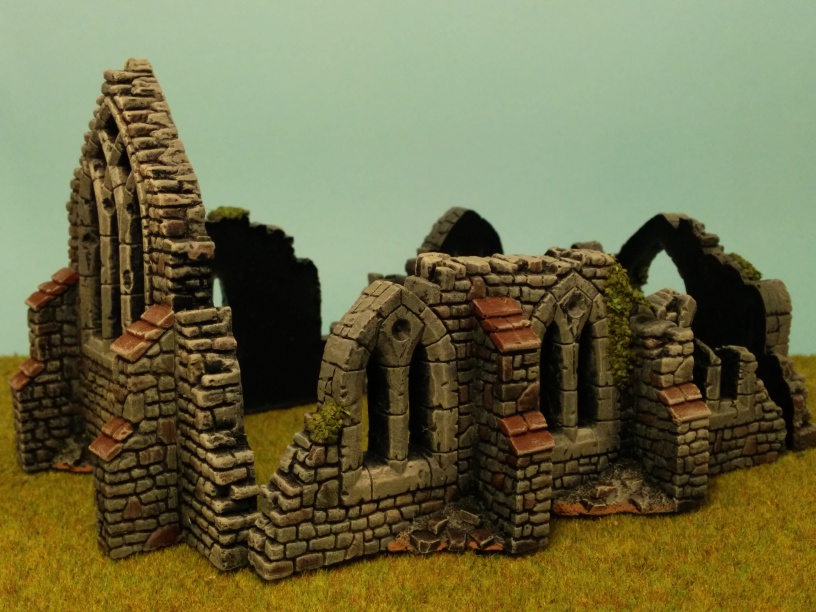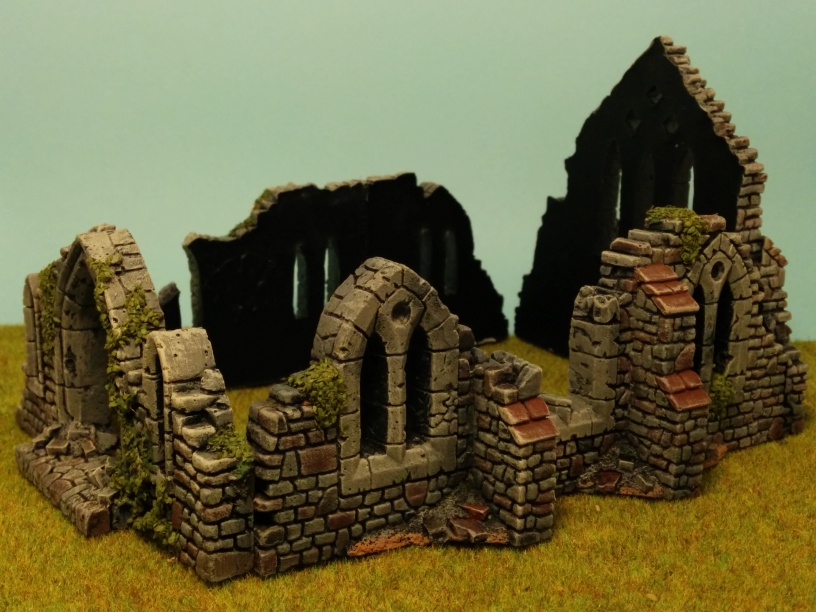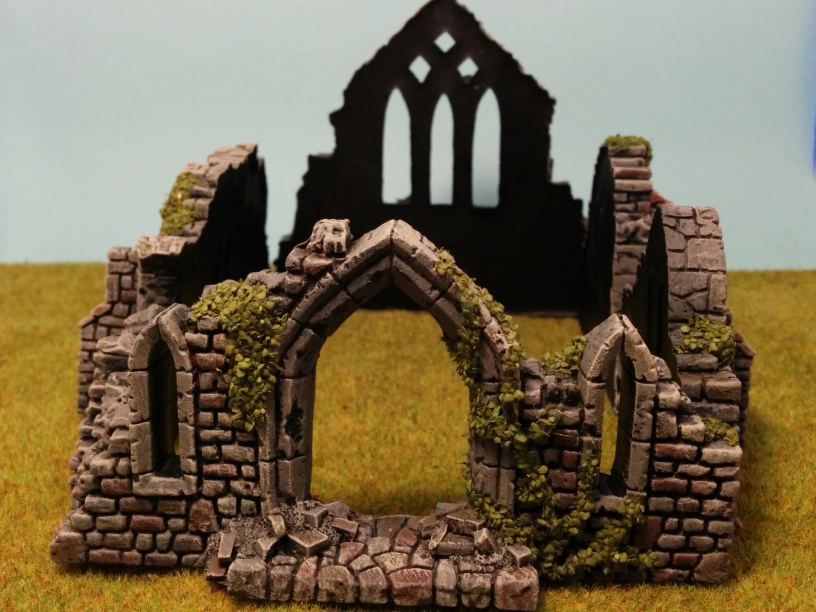A little while back I was ordering a boardgame from Spirit and they do free shipping if you buy over a certain amount -- the game was annoyingly close so I was trying to think if there was anything to get at the same time and remembered that they stock Scotia-Grendel resin scenics. I've always liked the range, so I had a quick browse and found they had the ruined cathedral in stock.
So I got the free shipping and hence (effectively) a cheap cathedral ruin. It needed a little tidying up, but not much considering the model is so old; I guess it's been remoulded at some point. The six resin parts are supposed to assemble into an L shaped part, the doorway section and a long side. I decided not to connect the side to the window-end in order to aid with storing the parts.
On Friday I was working from home, so in gaps in coding while the enormously slow self-tests were running (we really need to invest in the cluster of systems that runs on. It's slow in the mornings, but in the afternoons when the US developers are using it as well it's
glacial) I could get some painting done and brickwork is something that can easily be done in small bouts.
 |
| One side... |
The parts had already been under-coated with black spraypaint. The brickwork gets a light drybrush in a mid grey. It's important that it's a chromatically neutral grey, because the next stage is to use various inks to tint the bricks in various colours. I use Ogryn Flesh and the three Army Painter shades.
 |
| The other side... |
The inking produces not only bricks with subtle different colourations, but also will vary those colourations across the bricks; making them look more like natural stone. One can get similar effects by very lightly dry-brushing colours on, but it's harder to do that on a brick-by-brick basis. Once the inks have dried, I dry-brush everything with Howard Hues "Old Wood". It's a dusty off-white which is one of my favourite ways of getting a quick weathering effect on almost anything because it's colourless enough that the underlying tones won't be erased by it but just given depth. I don't actually find the HH range particularly good to paint with - I find they have terrible coverage despite being quick viscous. However, exactly those properties seem to make them excellent dry-brushing colours.
 |
| The doorway! |
After that, the plant growth was picked out in a dark green Vallejo colour (I can't recall which one now) and coated in PVA glue and then Noch Olive Leaves provide the texture. These are excellent for plant growth; larger than normal ground-scatter, they're visibly individual leaves which make the plant portrayals more eyecatching when you want them to be a feature rather than part of the backdrop.
Quite a nice bit of terrain for what amounted to about a tenner (after the free postage!) and an afternoon's work.




No comments:
Post a Comment